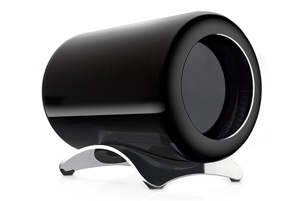The latest smartphone sales data from Kantar Worldpanel ComTech (http://www.kantarworldpanel.com/) for the first quarter of 2015 (1Q15) shows that the popularity of Apple iOS continued to grow in Europe’s five largest countries, reaching a 20.3% share – 1.8 percentage points higher than in 2014. Europe’s big five markets are Great Britain, Germany, France, Italy, and Spain.
“In the first quarter of 2015, the iPhone 6 and 6 Plus continued to attract consumers across Europe, including users who previously owned an Android smartphone,” says Carolina Milanesi, chief of research at Kantar Worldpanel ComTech. “On average, across Europe’s big five countries during the first quarter, 32.4% of Apple’s new customers switched to iOS from Android.
In urban China, Apple consolidated its leadership in smartphones, growing its share to 26.1%, up from 17.9% for the same period in 2014, according to Tamsin Timpson, strategic insight director at Kantar Worldpanel ComTech Asia. China is now driving more volume for Apple than the U.S., as the Cupertino company reaches beyond the more affluent buyers.
In 1Q15, Apple represented 25% of smartphone sales in urban China’s 2,000 to 4,000 RMBs income bracket. That’s a 10.1 percentage point increase from the same period in 2014.
Across Europe, Android’s share declined by 3.1 percentage points compared to last year, to 68.4%, as iOS rose by 1.8%.
“In Great Britain, while 25.6% of new iOS buyers switched from Android during the quarter, Android’s leadership remains strong, thanks to the price options consumers have in both the contract and prepay market,” says Dominic Sunnebo, business unit director at Kantar Worldpanel ComTech Europe. “Thirty-five percent of consumers who bought an Android smartphone in 1Q15 said their decision was driven by receiving a good price on the phone. Another 29% said that getting a good deal on the tariff/contract was a factor in their purchase.”
In the U.S., Android reached a market share of 58.1% — a 0.2 percentage point gain over 1Q14.
“LG had a particularly good first quarter with its share growing to 10.8% from 7.4% a year ago, while Samsung was holding on to second place as it prepared for the launch of its new Galaxy S6 and S6 Edge in April,” Milanesi says. “Apple’s iPhone 6 and 6 Plus already represent 18% of all iPhones in use in the U.S., and 64% of the iPhone installed base is an iPhone 5 or newer — good news for the Apple Watch that interacts only with these newer models.”
A week after the Microsoft developer conference kicked off, it’s notable that Windows’ market share has grown little during the past year in the U.S. and the EU big five — with the exception of France where market share grew to 14.1% in 1Q15.
“If we dig a little deeper, it is easy to see the strong value proposition that the Lumia portfolio offers, as Windows phone sales in the U.S. skew towards the prepay market (20%) and installment plans (51%),” Milanesi adds. “Microsoft is betting that new Windows 10 functions and the ability for developers to easily port Android apps to Windows will make the Windows ecosystem more appealing.”




